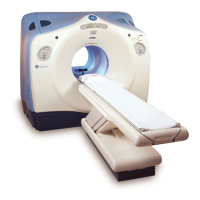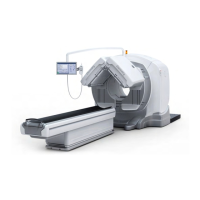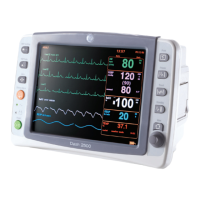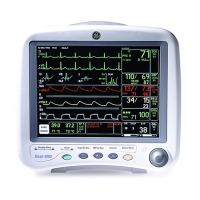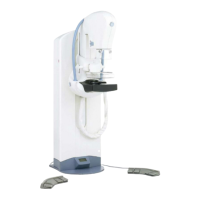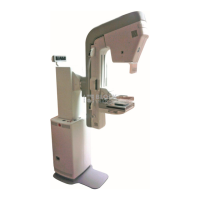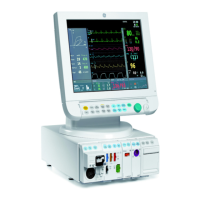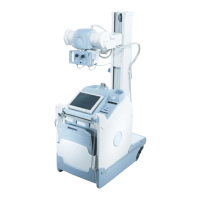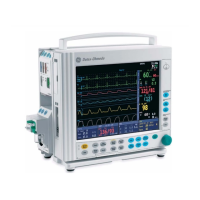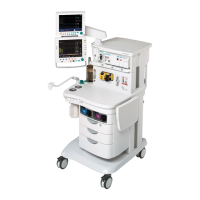5 Operating procedures
86500-IMG rev 3 GE Healthcare 33
Fig 5.11. Cranio-caudal projection
5.7.3 Oblique projection
1 Select the required film size. Load the film into the cassette. Place the
cassette in the cassette holder.
2 Rotate the C-Arm to the required oblique projection angle (35-60°)
using the OBL-key. If automatic ParkBack is disabled, drive the tube
head to the back to get more work space and better access to the
patient.
3 Adjust the image receptor height using the vertical drive controls.
Place the upper edge of the image receptor so that the axillary tail of
the breast will be visualized.
4 Ask the patient to hold the arm on the side to be imaged, at a 90°
angle and turn the patient slightly inwards to an oblique position.
Rotate the patient towards the image receptor and place their breast
onto the cassette holder so that it totally covers at least one of the
AutoPoint AEC detectors.
5 Select the most appropriate detector or use the AutoPoint automatic
detector selection function. Make sure that the lateral breast tissue is
pulled forward.
6 Apply compression with the foot pedal or by using the manual
controls. Make sure that the patient’s nipple is in profile and that no
skin folds are present. If the tube head is back, drive it forward. Check
that the Ready light is on.
7 Make the exposure by pressing the exposure button and keep it
pressed until the radiation indicator light turns off and the audible
exposure indicator stops.
FOR TRAINING PURPOSES ONLY!
NOTE: Once downloaded, this document is UNCONTROLLED, and therefore may not be the latest revision. Always confirm revision status against a validated source (ie CDL).
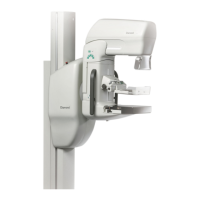
